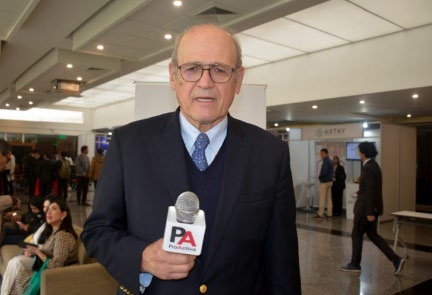Source:
Proactivo, 05/08/2025
At the VI International Symposium on Mining Technological Innovations (SIITMIN 2025), Raúl Benavides, director of Compañía de Minas Buenaventura, outlined a clear challenge for the sector: produce more copper while using less water, less energy, and less land disturbance. He contrasted the past with the present—where a century ago 3 cubic meters of water and 10 kWh of energy could yield 40 kilos of copper, today that same output demands over 160 kWh, eight tons of ore, and large water volumes. This shift, he argued, underscores the urgency of a technological transformation that places efficiency and resource optimization at the core of mining sustainability.
Buenaventura has already begun deploying innovations to meet this challenge. In its Brocal mine, robotics and automation have streamlined operations, while at Orcopampa, the adoption of underground electric equipment has eliminated diesel emissions. The company has also introduced tablet-based geological data capture, enhanced the precision of ore modeling, and developed a clean process for treating arsenic-rich copper without smelting or CO₂ emissions. These efforts align with Benavides’ call for mining operations to achieve near-total water recycling and to anticipate the high energy demands of digitalized, AI-driven mining systems.
From a broader industry perspective, meeting the “produce more with less” challenge will require more than internal technological upgrades—it will demand strong stakeholder participation and a social license to operate grounded in environmental stewardship. Communities, regulators, and investors are increasingly measuring mining legitimacy by tangible reductions in environmental impact and transparent sharing of efficiency gains. If the sector fails to link innovation with community trust, environmental safeguards, and equitable benefits, the technological advances Benavides champions risk being dismissed as corporate rhetoric rather than real progress toward a sustainable mining future.

